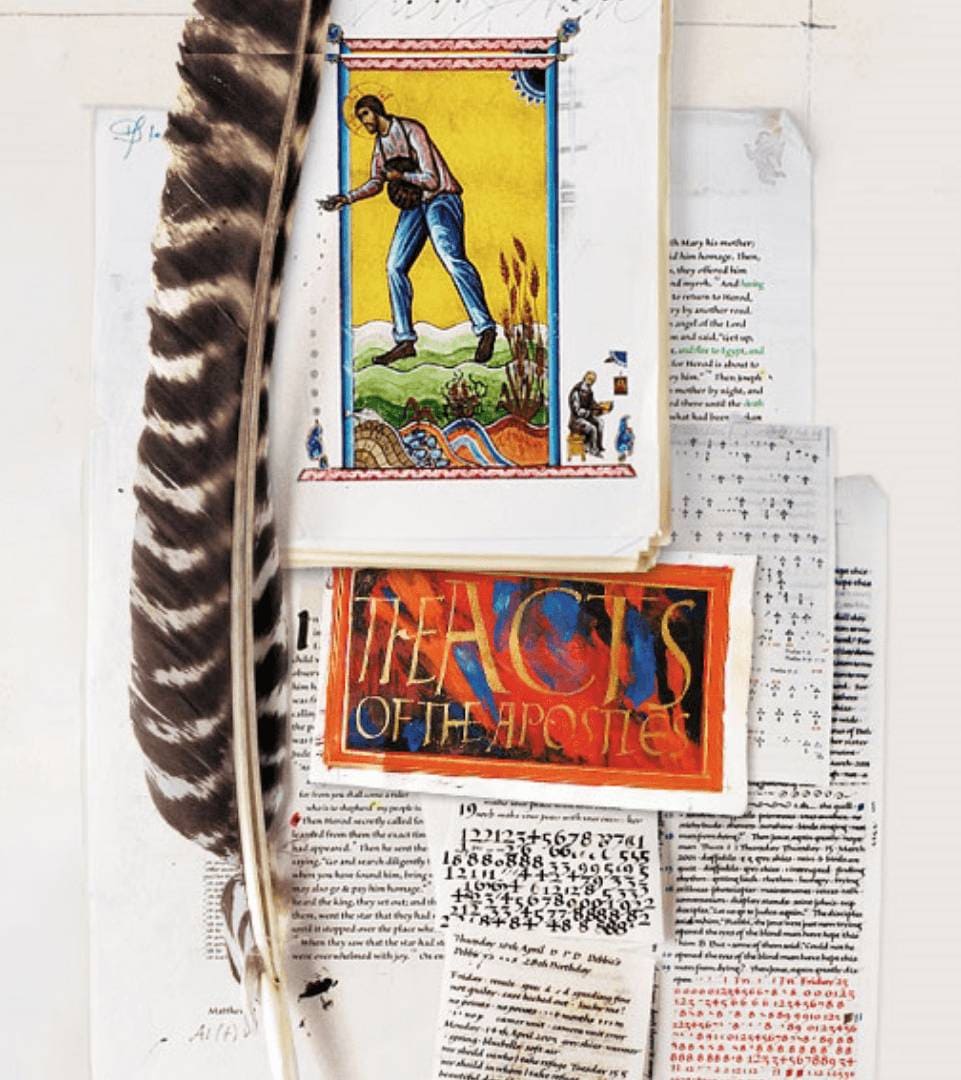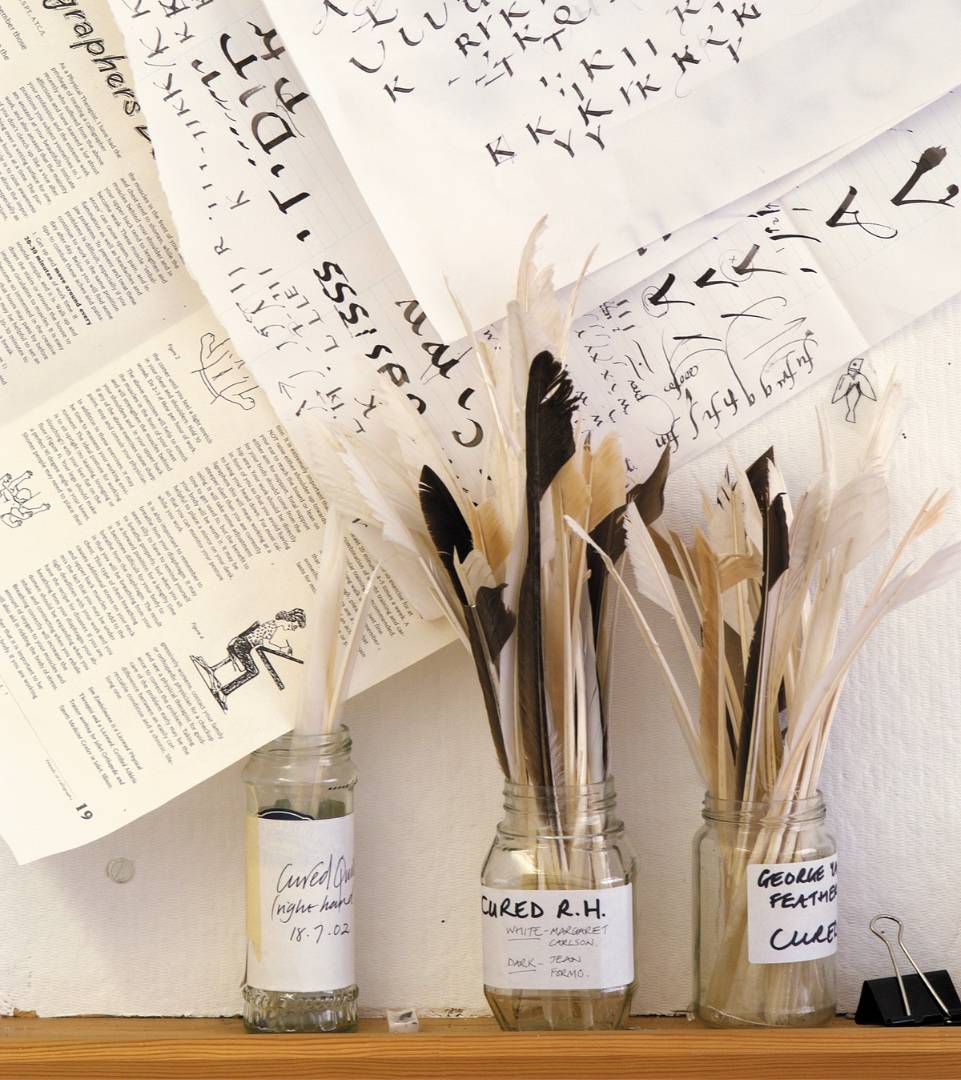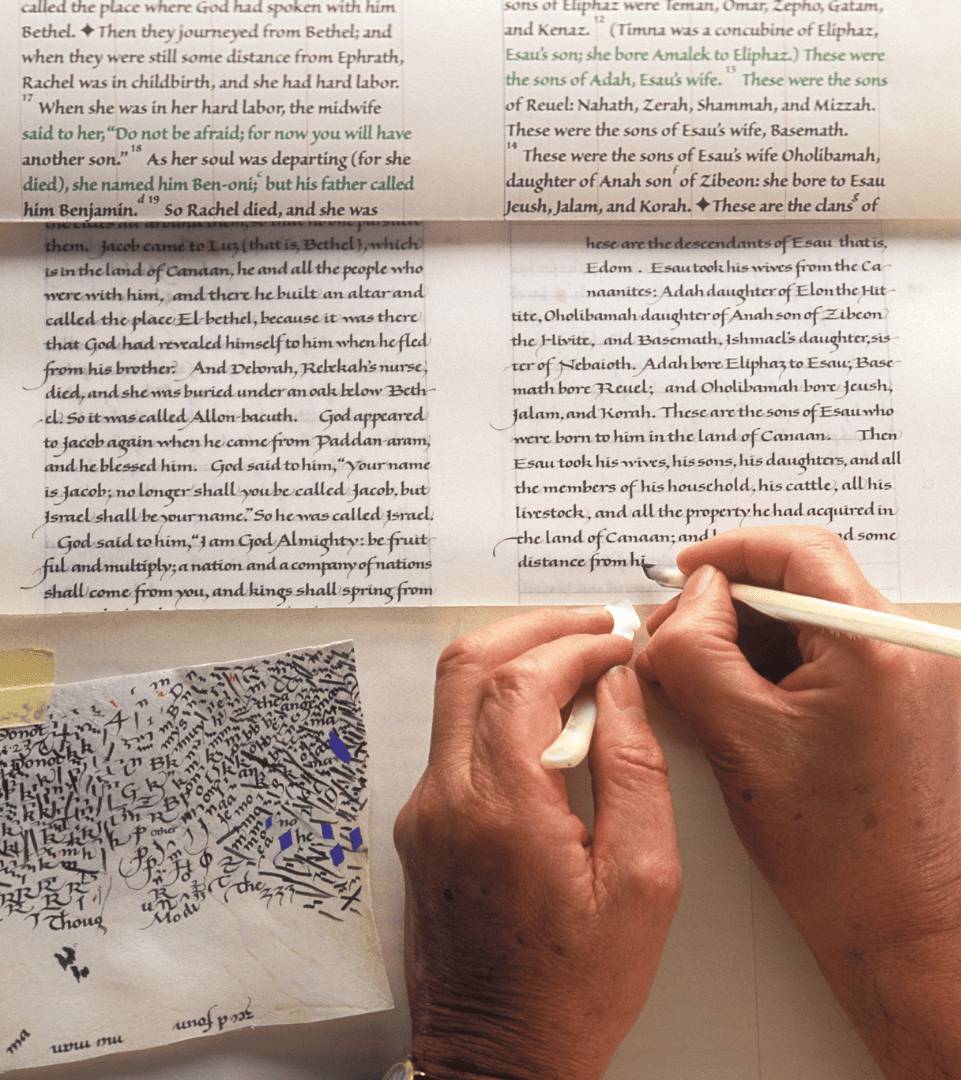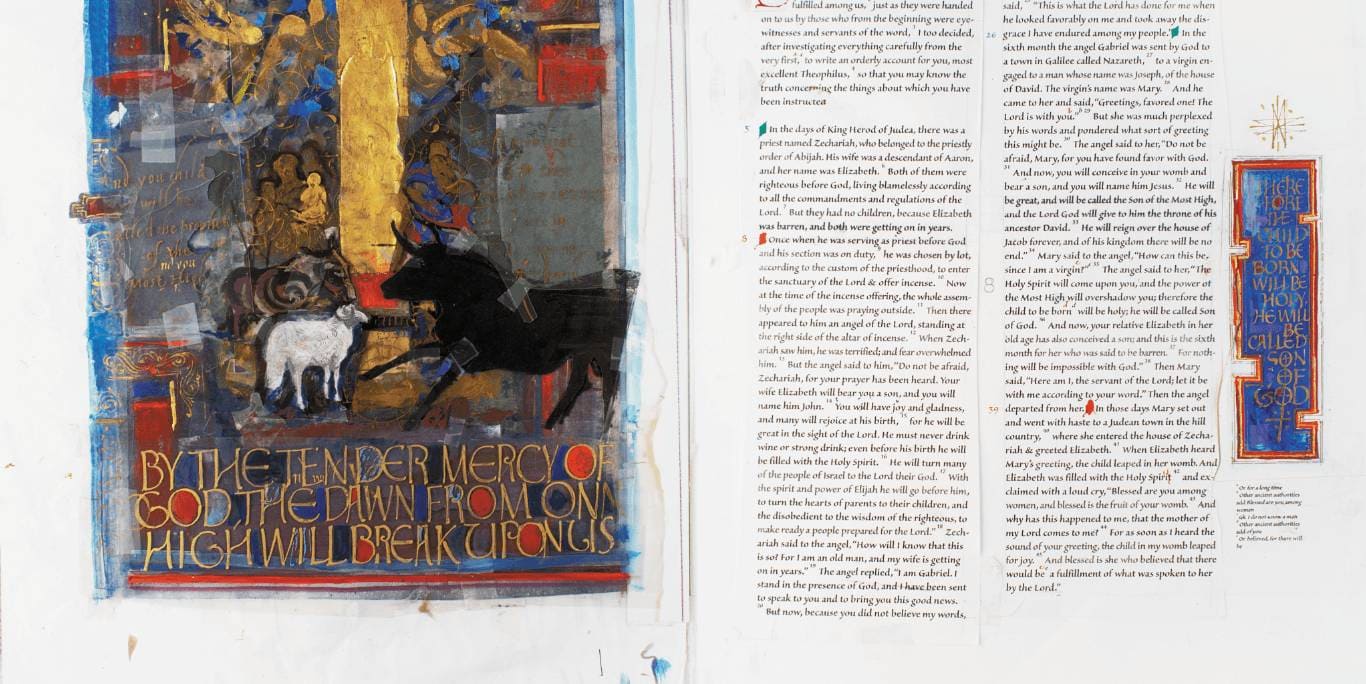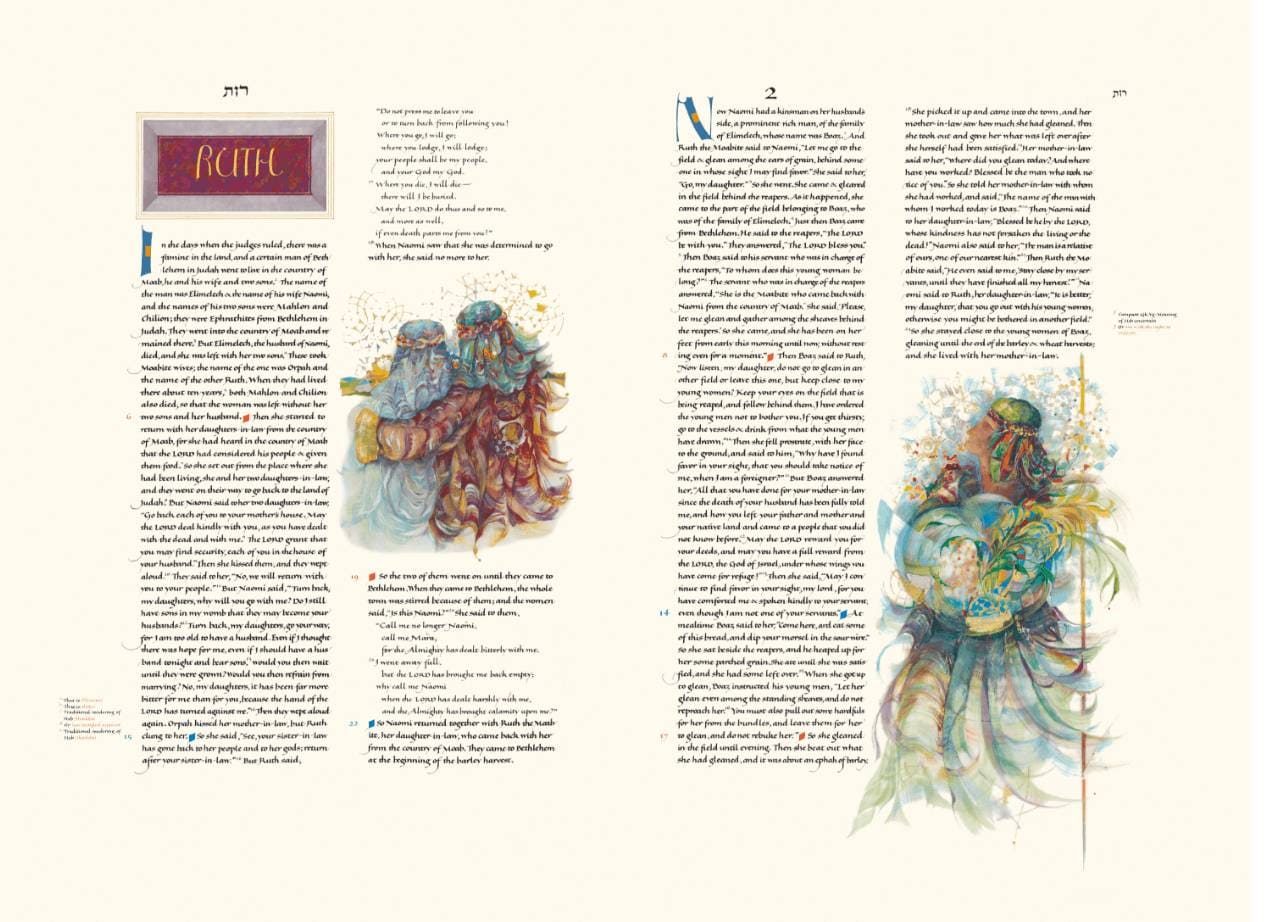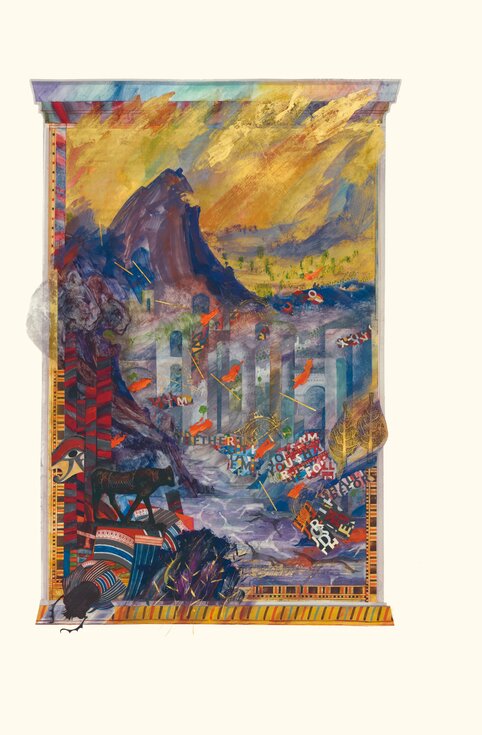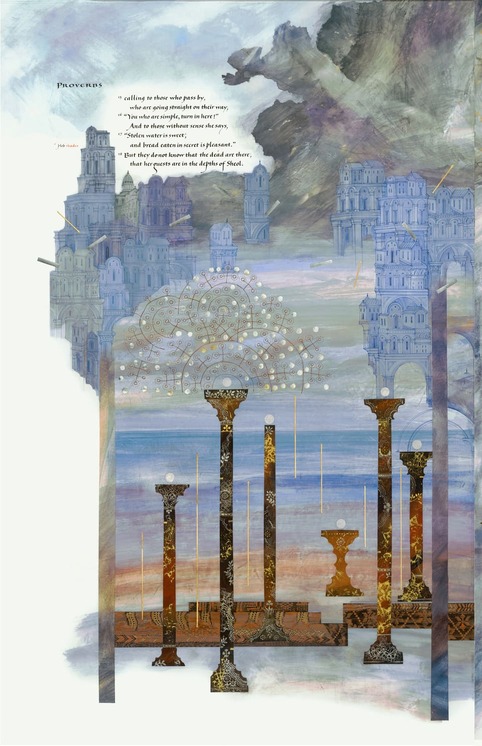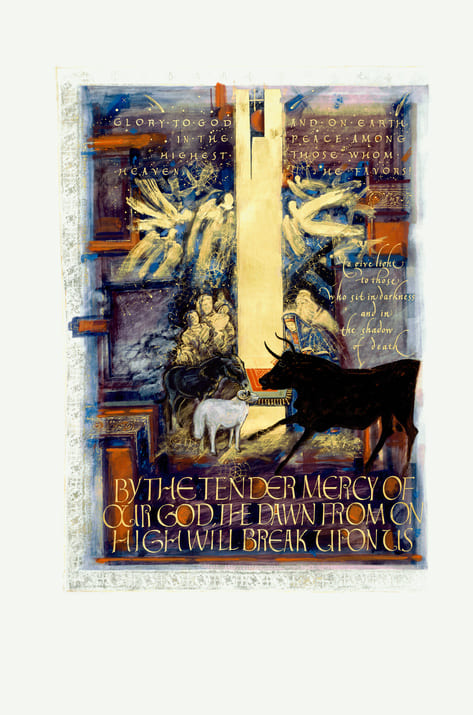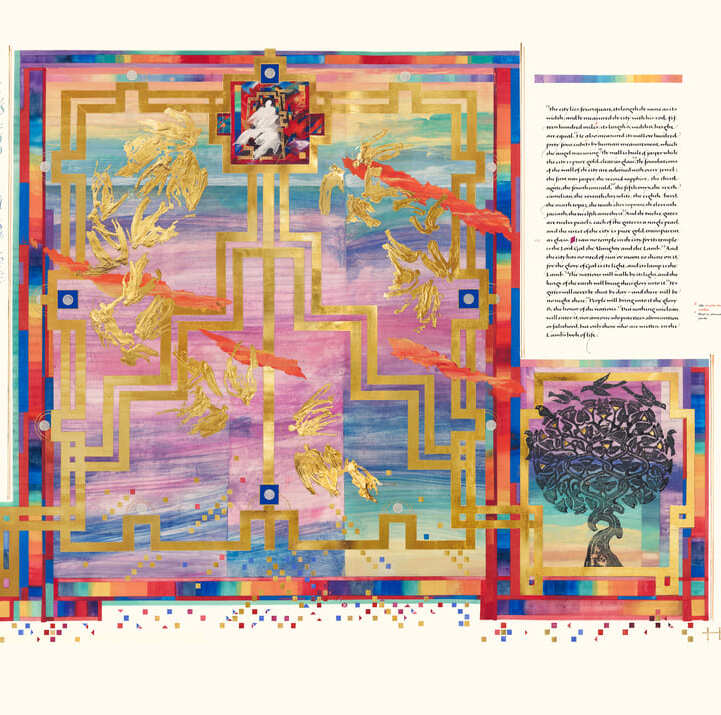A masterpiece of Biblical Proportions
The Saint John’s Bible is the first handwritten illuminated Bible commissioned by a Benedictine monastery in over 500 years. Created to mark the Millennium, this wildly ambitious project was conceived of by Donald Jackson former Senior Scribe and Illuminator at the Crown Office in the House of Lords, who was commissioned by the Benedictine Monks of Saint John’s Abbey in Collegeville, Minnesota. Under Jackson’s fastidious creative direction, The Saint John’s Bible was brought slowly and diligently into existence by a team of gifted scribes, artists, and assistants. Letter by letter, line by line, year by year, across an astonishing 1,100 gorgeous handwritten pages. All told, it took Jackson’s talented team 15 years to complete this colossal work. A moment in its presence, however, is all it takes to be deeply moved by its spiritual elegance, pristine craft, fine attention to detail, stunning artwork, gilded illuminations, and, of course, by the sacred words of the scriptures themselves.
The skilled hand of a calligrapher artfully infuses every letter and symbol on a page with signature style, flowing elegance, and powerful creative dynamism. Each arcing stroke and looping flourish serves to animate the language, excite the reader’s eye, and stir emotion. With advances in printing technologies, calligraphers today focus mainly on small-scale works such as invitations, typography design, and memorial documents; not large-format pieces like books, and certainly not one as formidable as the bible. In fact, not since the advent of the printing press had anyone dared to put quill to vellum, using ancient inks and hand-ground pigments to produce a handwritten bible. This is why the moment you lay eyes on The Saint John’s Bible for the very first time and behold the wondrous calligraphic artistry that dances across each page, it is eminently clear why this hasn’t been done in over 500 years: this is truly and quite literally a work of biblical proportions.



